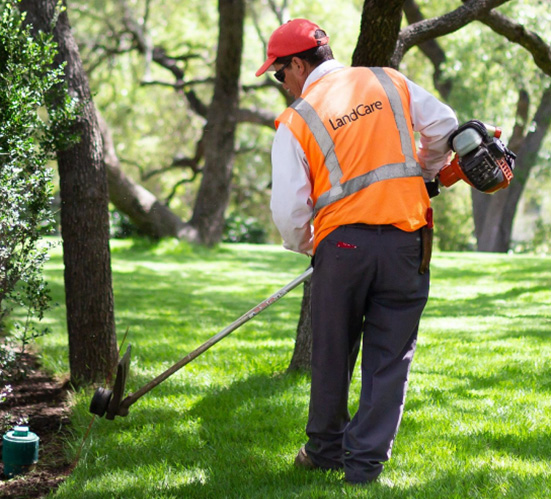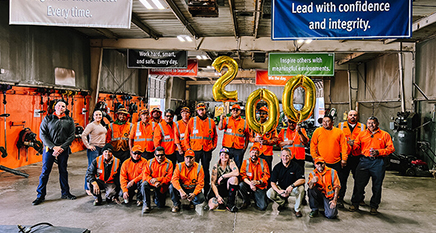When Jim Kelley started at LandCare in 2015, the company was in the midst of a transition. Mike Bogan had recently been named as CEO, and the company was undergoing a multimillion dollar culture rebrand from TruGreen LandCare to LandCare.
The following is an excerpt from Maintain Your Edge: How to Protect Your Brand, a story about culture, relationships, and people in landscaping. Read the full article from Landscape Management Magazine.
The company culture also presented challenges. “The sales staff at the time was driven to sell work at any price to get commission,” Kelley recalls. “Production teams required a certain number of hours to satisfy the client, but salespeople reduced those hours and threw low-bid jobs at the team to earn more commission.”
Kelley is LandCare’s regional vice president of SoCal and Southwest, a territory which in 2020, included seven branches in Southern California, Las Vegas and Phoenix. He says that throughout this transition and to this day, Bogan reminded the leadership team to protect the brand at all costs.
With the company’s portfolio comprised mostly of low-margin work, unhappy clients and unhappy team members, the company took a big step in an effort to improve operations and job quality: It eliminated sales commission for all team members companywide.
“With this strategy, we now had a better chance of selling work agreeable to the operations team,” he said. “It was critical the entire company realize that this change had long-term value. (Team members) knew they were going to have to contribute to our culture by building relationships, earning trust, and delivering solutions.”
LandCare provides landscape maintenance including enhancements and irrigation to a completely commercial clientele. In 2020, it reported revenue of $208 million. Kelley’s region reports 21 percent year over year portfolio growth and 91 percent client retention.
Kelley explains some of the ways his team protects the LandCare brand and stays successful in commercial landscaping.
Define your ideal client
As LandCare began to replace low-bid clients with higher-value clients, it prompted a big question: Who do we want to work with and why?
“We want to work with engaged clients who participate in win-win situations — people who appreciate a better quality of service and people who will take the time to strengthen relationships by sharing information and their perspective,” Kelley says.
Kelley had more than 20 years of his own experience in the landscape industry prior to joining LandCare, having worked for The Brickman Group and Palma Azul Landscape, a San Diego landscape company that was acquired by LandCare. He says it takes hard work upfront to qualify a good potential client. That step can happen before or during the request for proposal process.
On the other hand, quickly disqualifying clients who don’t fit your ideal client type is an important step. “When an opportunity shows up, get to ‘yes’ or ‘no’ on submitting a bid as quickly as possible,” Kelley says. “Who do we not want to work with? Let’s save ourselves some time and not try to win a bad contract.”
For commercial clients such as a homeowners association (HOA), Kelley says that the ideal scenario would be to communicate with a single decision-maker, such as a knowledgeable property manager who is able to guide and influence the HOA’s board of directors.
















